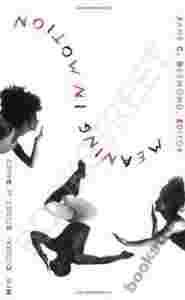|
Dance, whether considered as an art form or embodied
social practice, as product or process, is a prime
subject for cultural analysis. Yet only recently have
studies of dance become concerned with the ideological,
theoretical, and social meanings of dance practices,
performances, and institutions. In ''Meaning in
Motion'', Jane C. Desmond brings together the work of
critics who have ventured into the boundaries between
dance and cultural studies, and thus maps a little known
and rarely explored critical site.Writing from a broad
range of perspectives, contributors from disciplines as
varied as art history and anthropology, dance history
and political science, philosophy and women's studies,
chart the questions and challenges that mark this site.
How does dance enact or rework social categories of
identity? How do meanings change as dance styles cross
borders of race, nationality, or class? How do we talk
about materiality and motion, sensation and
expressivity, kinesthetics and ideology?The authors
engage these issues in a variety of contexts: from
popular social dances to the experimentation of the
avant-garde; from nineteenth-century ballet and
contemporary Afro-Brazilian Carnival dance to hip hop,
the dance hall, and film; from the nationalist politics
of folk dances to the feminist philosophies of modern
dance.''Meaning in Motion'' broadens the scope of dance
analysis and extends to cultural studies new ways of
approaching matters of embodiment, identity, and
representation. Giving definition to a new field of
study, it will interest students and scholars of dance,
art, and theatre history, as well as readers in
cultural, performance, and women's studies. Contributors
include: Ann Cooper Albright, Evan Alderson, Norman
Bryson, Ann Daly, Brenda Dixon Gottschild, Susan Foster,
Mark Franko, Marianne Goldberg, Amy Koritz, Susan Kozel,
Susan Manning, Randy Martin, Angela McRobbie, Cynthia
Novack, Kate Ramsey, Anna Scott, and Janet Wolff. |
|

